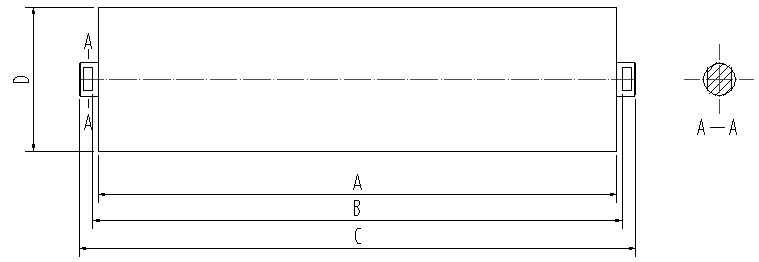 Afrikaans
Afrikaans  Albanian
Albanian  Amharic
Amharic  Arabic
Arabic  Armenian
Armenian  Azerbaijani
Azerbaijani  Basque
Basque  Belarusian
Belarusian  Bengali
Bengali  Bosnian
Bosnian  Bulgarian
Bulgarian  Catalan
Catalan  Cebuano
Cebuano  Corsican
Corsican  Croatian
Croatian  Czech
Czech  Danish
Danish  Dutch
Dutch  English
English  Esperanto
Esperanto  Estonian
Estonian  Finnish
Finnish  French
French  Frisian
Frisian  Galician
Galician  Georgian
Georgian  German
German  Greek
Greek  Gujarati
Gujarati  Haitian Creole
Haitian Creole  hausa
hausa  hawaiian
hawaiian  Hebrew
Hebrew  Hindi
Hindi  Miao
Miao  Hungarian
Hungarian  Icelandic
Icelandic  igbo
igbo  Indonesian
Indonesian  irish
irish  Italian
Italian  Japanese
Japanese  Javanese
Javanese  Kannada
Kannada  kazakh
kazakh  Khmer
Khmer  Rwandese
Rwandese  Korean
Korean  Kurdish
Kurdish  Kyrgyz
Kyrgyz  Lao
Lao  Latin
Latin  Latvian
Latvian  Lithuanian
Lithuanian  Luxembourgish
Luxembourgish  Macedonian
Macedonian  Malgashi
Malgashi  Malay
Malay  Malayalam
Malayalam  Maltese
Maltese  Maori
Maori  Marathi
Marathi  Mongolian
Mongolian  Myanmar
Myanmar  Nepali
Nepali  Norwegian
Norwegian  Norwegian
Norwegian  Occitan
Occitan  Pashto
Pashto  Persian
Persian  Polish
Polish  Portuguese
Portuguese  Punjabi
Punjabi  Romanian
Romanian  Russian
Russian  Samoan
Samoan  Scottish Gaelic
Scottish Gaelic  Serbian
Serbian  Sesotho
Sesotho  Shona
Shona  Sindhi
Sindhi  Sinhala
Sinhala  Slovak
Slovak  Slovenian
Slovenian  Somali
Somali  Spanish
Spanish  Sundanese
Sundanese  Swahili
Swahili  Swedish
Swedish  Tagalog
Tagalog  Tajik
Tajik  Tamil
Tamil  Tatar
Tatar  Telugu
Telugu  Thai
Thai  Turkish
Turkish  Turkmen
Turkmen  Ukrainian
Ukrainian  Urdu
Urdu  Uighur
Uighur  Uzbek
Uzbek  Vietnamese
Vietnamese  Welsh
Welsh  Bantu
Bantu  Yiddish
Yiddish  Yoruba
Yoruba  Zulu
Zulu conveyor belt parts and functions
Understanding Conveyor Belt Parts and Their Functions
Conveyor belts are essential components of various industries, facilitating the smooth and efficient movement of goods and materials
. Understanding the parts of a conveyor belt and their functions can provide insight into how these systems operate and their importance in manufacturing, warehousing, and logistics.1. Belt The belt itself is the most recognizable component of a conveyor system. Typically made from rubber, fabric, or metal, the conveyor belt transports materials from one point to another. The choice of material depends on the product being moved and the environment it operates in. For example, heavy-duty belts are used for transporting bulk materials, while lighter belts suit smaller packages.
2. Rollers Rollers are cylindrical components that support and guide the belt. They are strategically placed along the conveyor line. The primary functions of rollers include reducing friction, providing a surface for the belt to run on, and supporting the weight of the materials being transported. There are different types of rollers, such as idler rollers, which keep the belt aligned, and drive rollers, which are powered by motors to move the belt.
3. Frame The frame is the structural backbone of the conveyor system. It provides stability and support for all other components. Frames can vary in design, including fixed frameworks or adjustable ones to accommodate different conveyor lengths. Materials used for the frame may include steel or aluminum, chosen based on the required strength and weight capacity.
conveyor belt parts and functions

4. Drive system The drive system powers the conveyor belt. It typically consists of a motor, gear box, and pulley. The motor provides the necessary force to move the belt, while the gear box helps control the speed. The pulleys, often located at both ends of the conveyor, are crucial for maintaining tension on the belt and facilitating movement.
5. Tensioning device A tensioning device is responsible for maintaining the proper tension on the conveyor belt. Adequate tension is crucial to prevent slippage and ensure smooth operation. The tension can be adjusted using devices such as take-up units, which allow for the belt's length to be altered as it stretches over time.
6. Safety features Safety features, including emergency stop buttons and guards, are integral to conveyor systems. These components ensure safe operation, protecting both the equipment and personnel working nearby.
In conclusion, understanding the various parts of a conveyor belt and their functions is vital for anyone involved in industries that rely on these systems. From the belt and rollers to the drive system and safety features, each component plays a crucial role in ensuring efficient and safe operations, making conveyor belts an indispensable part of modern manufacturing and logistics.
-
Revolutionizing Conveyor Reliability with Advanced Rubber Lagging PulleysNewsJul.22,2025
-
Powering Precision and Durability with Expert Manufacturers of Conveyor ComponentsNewsJul.22,2025
-
Optimizing Conveyor Systems with Advanced Conveyor AccessoriesNewsJul.22,2025
-
Maximize Conveyor Efficiency with Quality Conveyor Idler PulleysNewsJul.22,2025
-
Future-Proof Your Conveyor System with High-Performance Polyurethane RollerNewsJul.22,2025
-
Driving Efficiency Forward with Quality Idlers and RollersNewsJul.22,2025





























